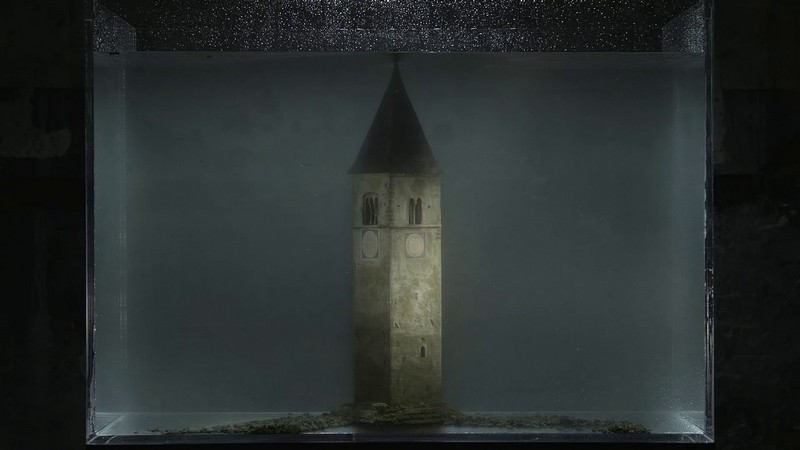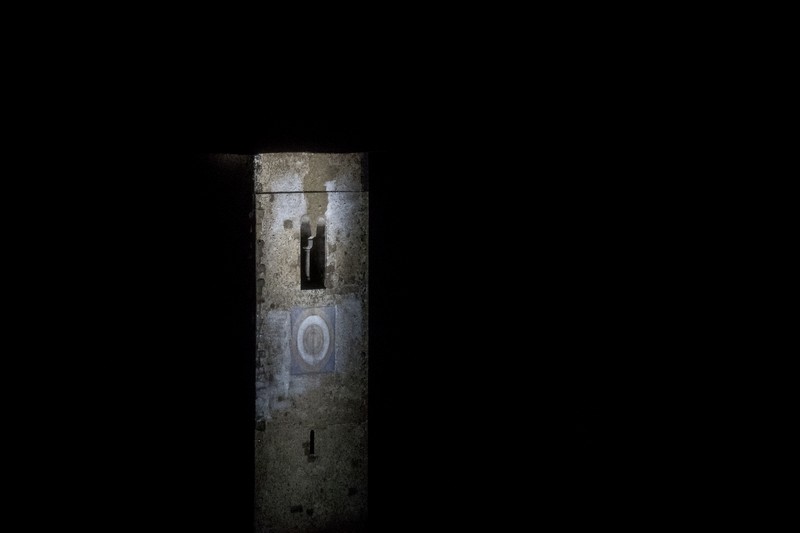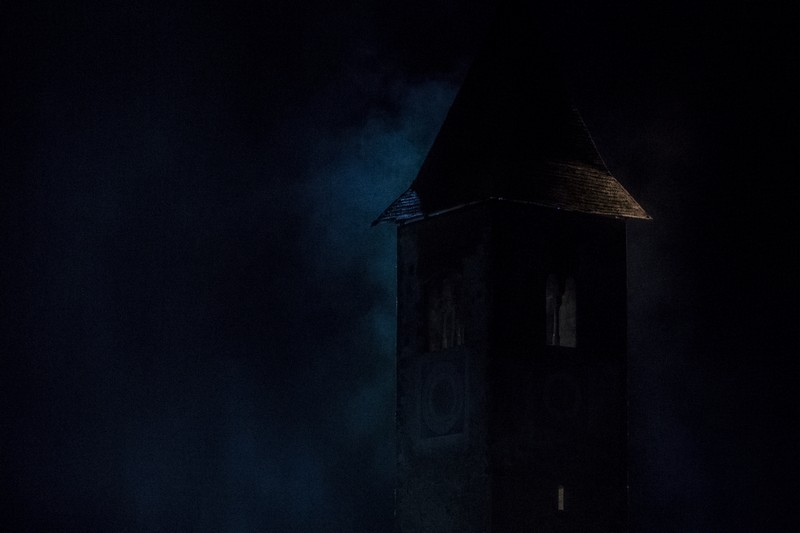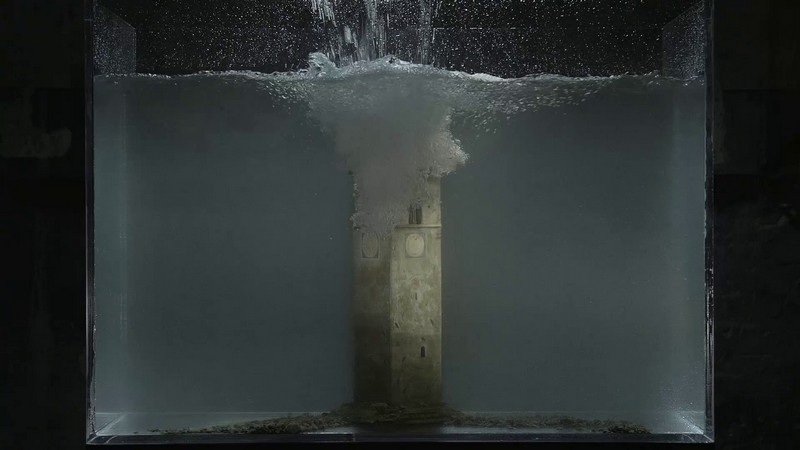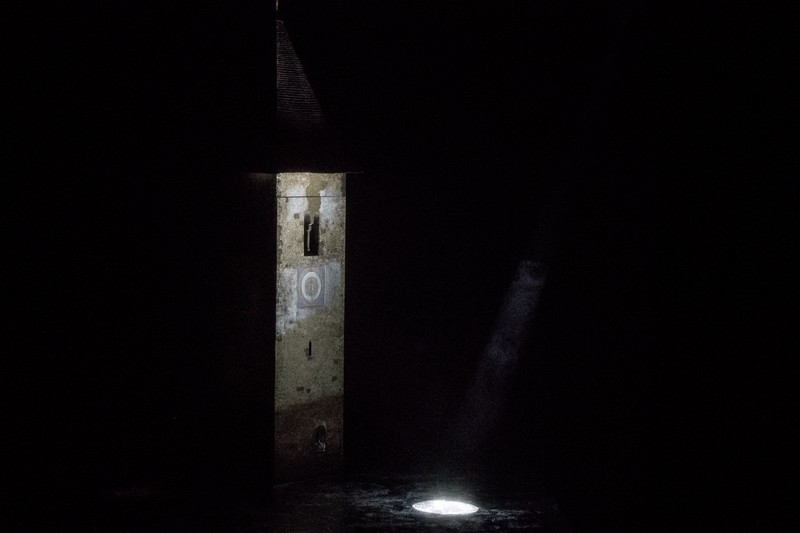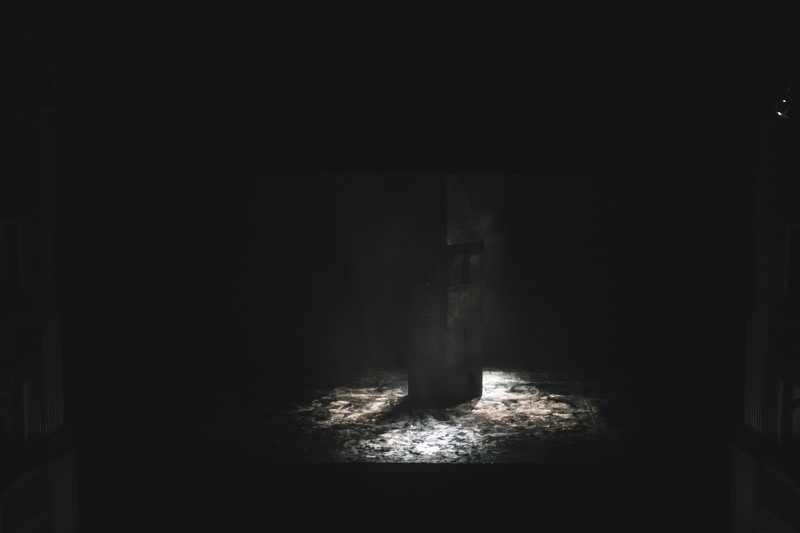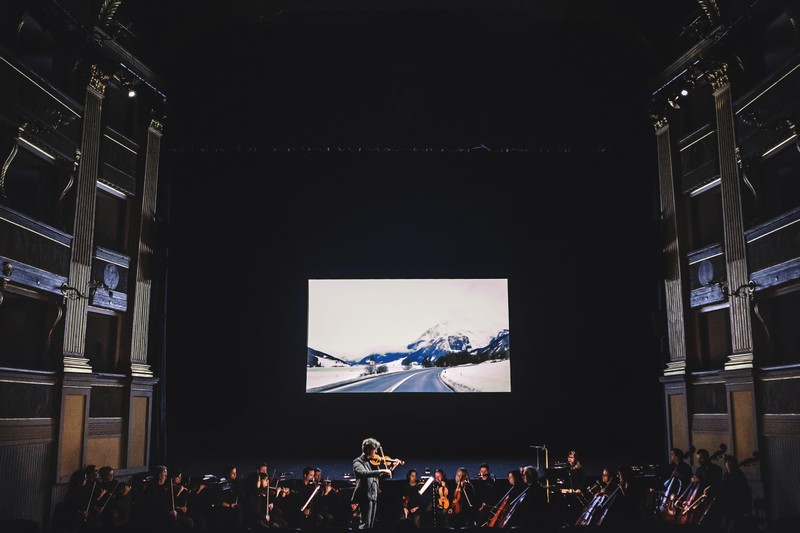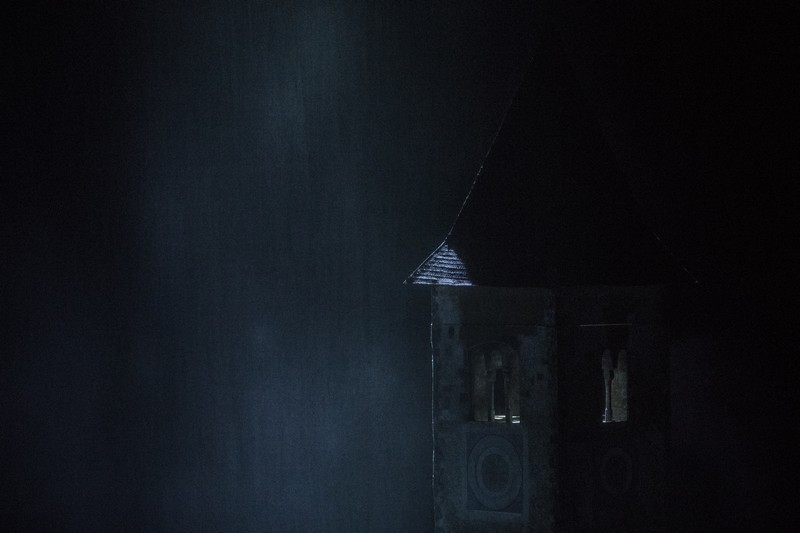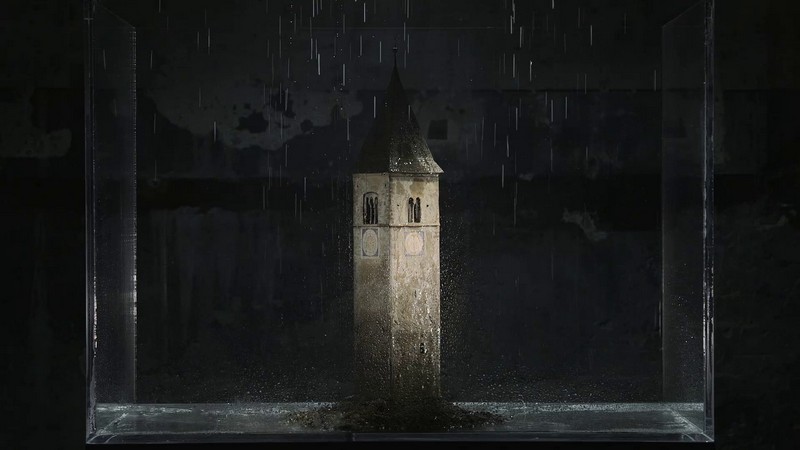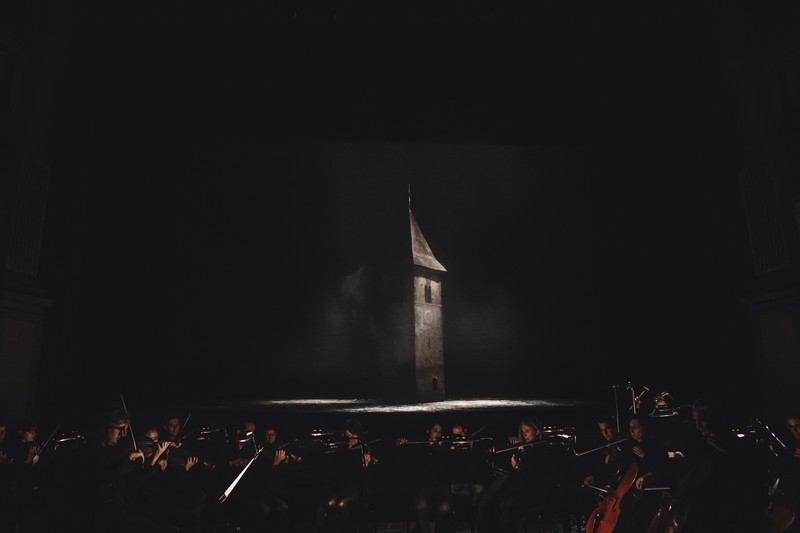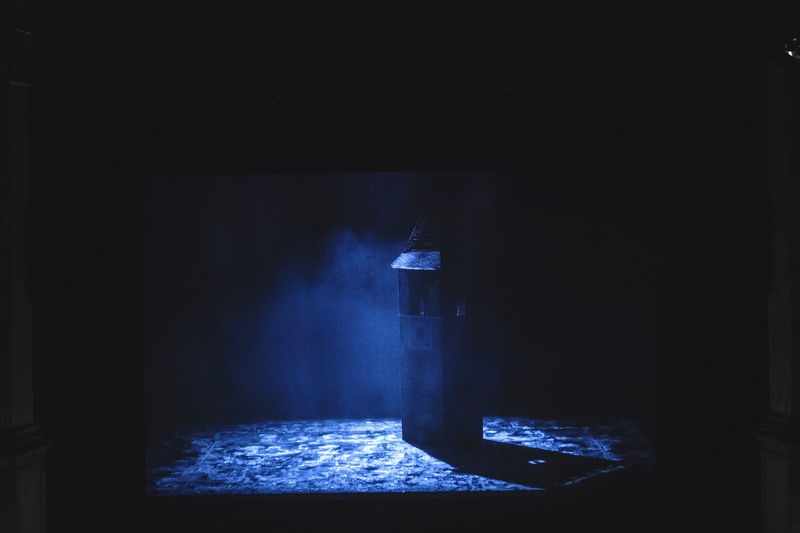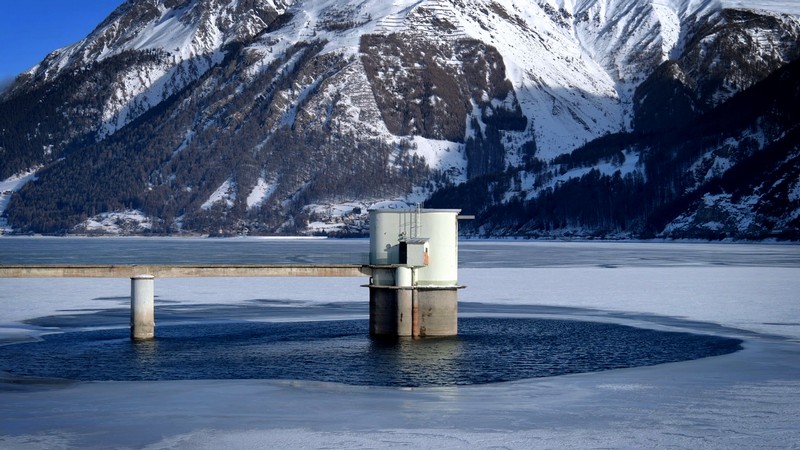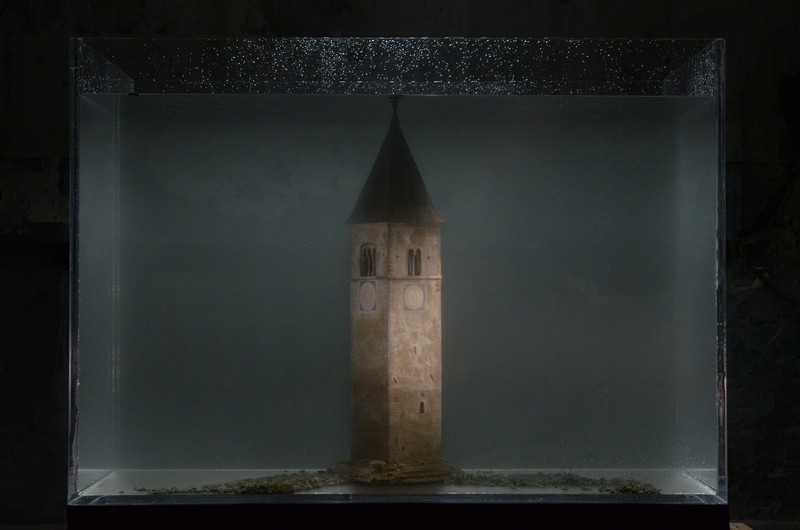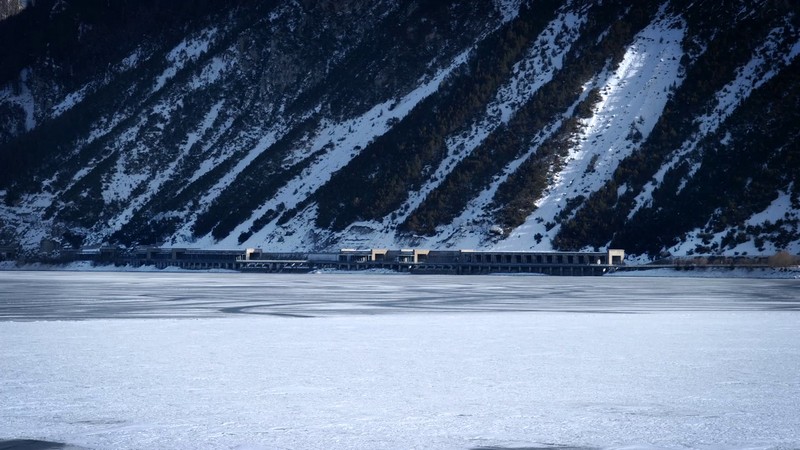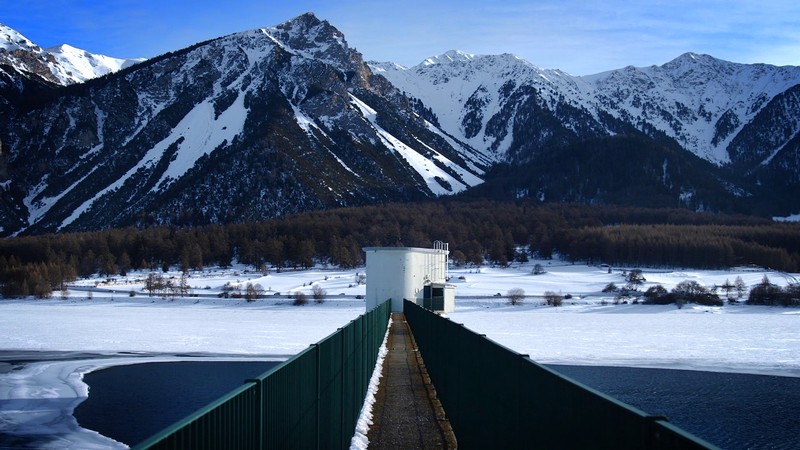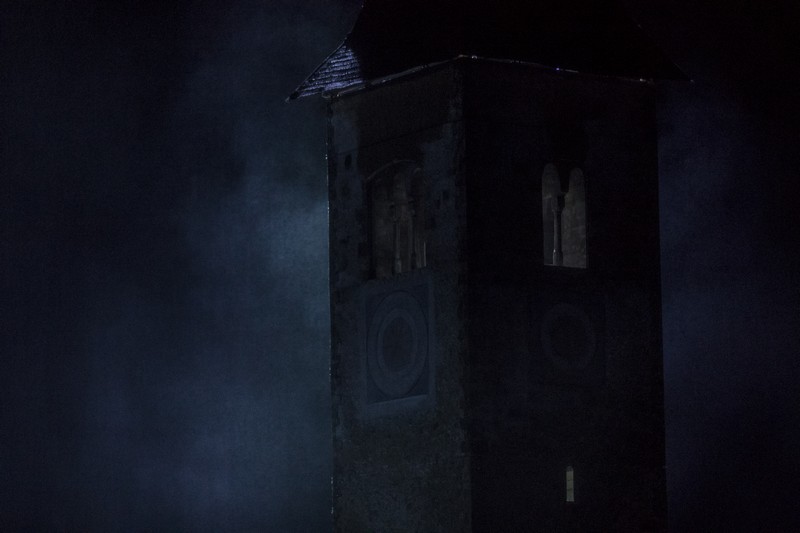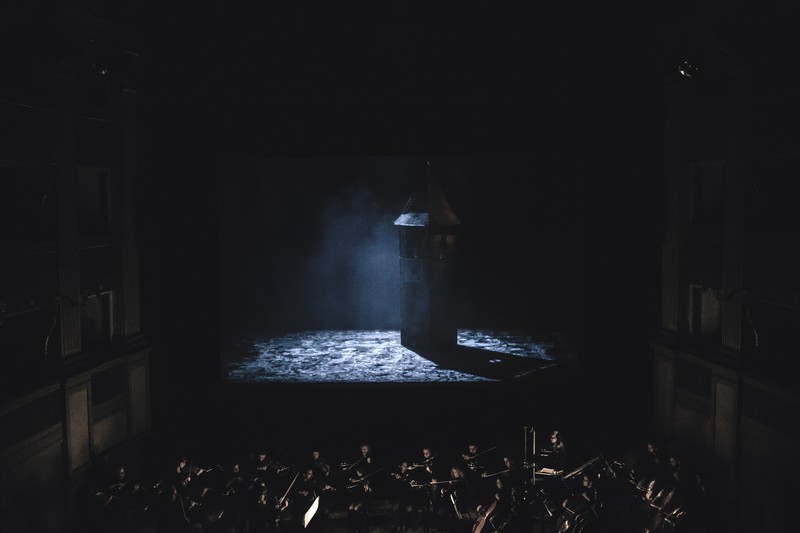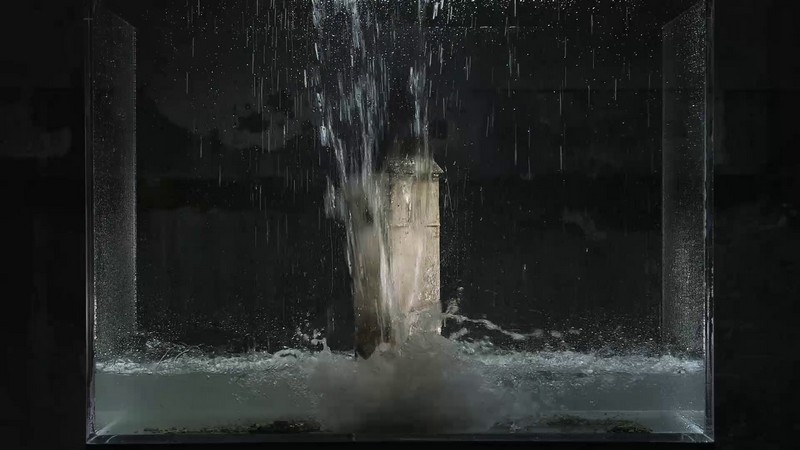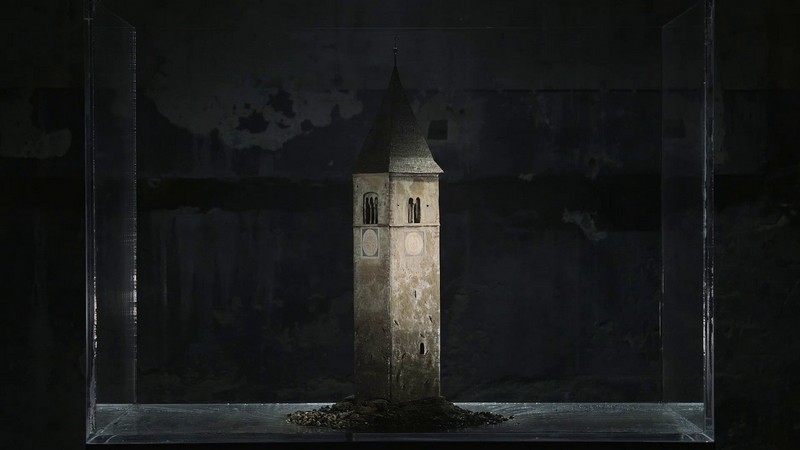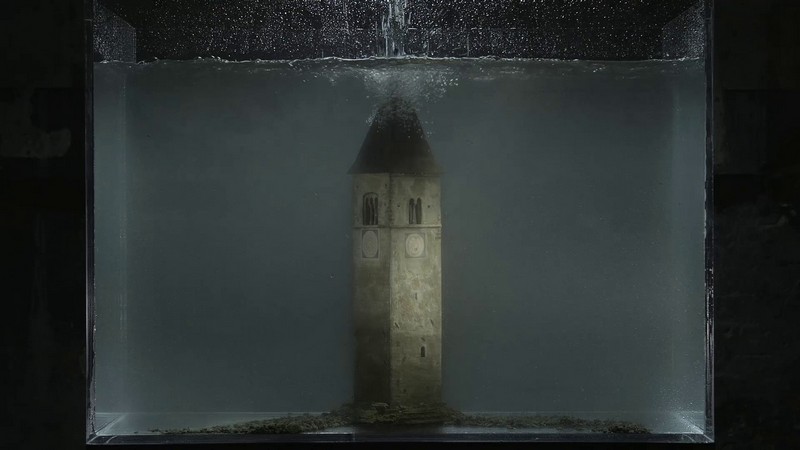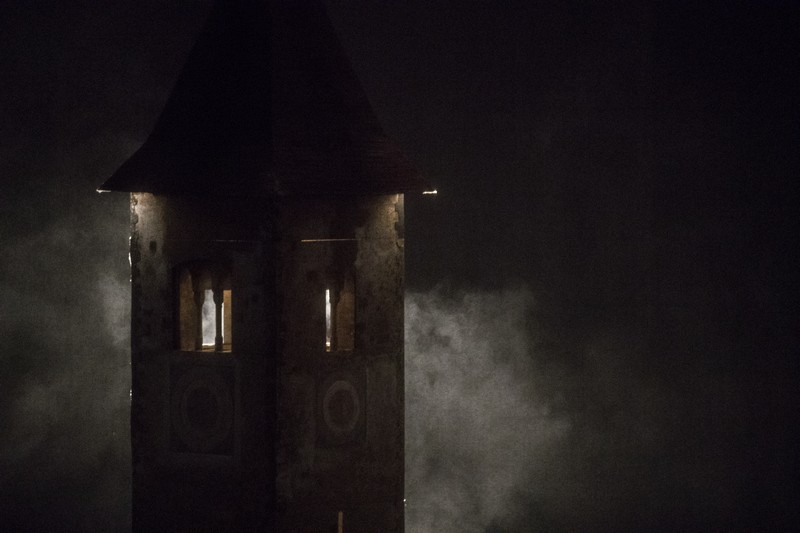content
For the first time, OHT deals with music theatre by taking inspiration from Arvo Pärt’s music and from an ambiguous relationship between man and nature. The story of the village of Curon / Graun in Alto Adige, completely submerged in water in 1950, is told according to different modalities, each of which corresponds to one version of Fratres; a composition without fixed instrumentation. Text and filmed images combined with live performance, involve the audience in an epiphanic and hypnotic event, where the bell tower of the church of the submerged village of Curon becomes the only protagonist on stage, by playing – for alliteration – the role of the bell in the piece Cantus in memoriam Benjamin Britten. In line with the political implications of the last OHT’s plays, this new theatre production depicts a drowned village, where the invisible forces of the alpine landscape can emerge vehemently through the sound of the bell – typical of Arvo Pärt’s tintinnabuli style.
Curon / Graun introduces the audience to a space without actors. The basis of the work is the sound of the bells and their spiritual strength due to the reconstruction of the submerged bell tower and by making the stage a literal metaphor for Arvo Pärt’s tintinnabuli style. The scene opens with the silence as point of no return of the Estonian composer, who thanks to six years of solitary contemplation could reach the essence of his music and what resounds deeply in people through art.
year
2018
running time
0:50:00.0
genre
music theatre
2018 UBU Prize nomination as best set-up
press
Sanbaradio > La rifrazione del silenzio, 05.IV.2023
Antinomie > Curon/Graun decostruzione di un'immagine, 11.III.2020
PAC > La memoria del campanile, 10.II.2020
la Repubblica > Curon, il paese sommerso ritrova la vita, 03.II.2020
Stratagemmi > Curon/Graun, intervista a Filippo Andreatta, 02.II.2020
la Repubblica > Quel campanile del borgo sommerso, 25.I.2020
ICON Design > La poesia dell'immobilità, 15.I.2020
La Lettura - Corriere della Sera > Ho visto 100 spettacoli, 12 buoni, 8 brutti, gli altri... 30.XII.2018
La Lettura - Corriere della Sera > Suona ancora, campana, ti prego!, 25.XI.2018
domenica - il Sole 24 ore > RomaEuropa ospita lo spettacolo del campanile sommerso, 11.XI.2018
il Trentino > l'intervista, 04.XI.2018
il manifesto - Alias > Il campanile silenzioso, 11.VIII.2018
Rumor(s)cena > L'opera Curon/Graun: quando la storia ispira l'arte, 26.VI.2018
L'Adige > Con Curon/Graun si riflette sull'Italia, 14.VI.2018
ATP Diary > Un Supercontinent che si avvera, 14.VI.2018
Smart Review > CURON/GRAUN quando tra uomo e natura si insinua il teatro, 11.VI.2018
Exibart > Il suono del campanile sommerso, 11.VI.2018
Corriere della Sera - Trentino > La Haydn a Drodesera, 10.VI.2018
Franz Magazine > Rintocchi nel silenzio, 08.VI.2018
Club Milano > CURON/GRAUN teatro musicale, 07.VI.2018
ArtsLive > Rintocchi di suoni e silenzi, 06.VI.2018
Stratagemmi > Curon/Graun, 04.III.2018
Artribune > L’inondazione di Curon raccontata da OHT, 04.III.2018
Connessi all'Opera > Curon/Graun, 27.II.2018
Corriere dell'Alto Adige > Curon/Graun al Sociale, 25.II.2018
Sipario > Curon/Graun, 25.II.2018
MTG Lirica > CURON/GRAUN – OPERA 2021, 25.II.2018
Le Salon Musical > Trento e Bolzano: Curon e Gaia, 23.II.2018
Giornale Della Musica > Dittico contemporaneo, 22.II.2018
credits
Curon / Graun
story of a drowned village
> by OHT | Office for a Human Theatre
> music Arvo Pärt
> “Fratres” for string quartet
> “Fratres” for string and percussion
> “Fratres” for violin, string and percussion
> “Cantus in memoriam Benjamin Britten”
> directing Filippo Andreatta
> set-design Paola Villani
> light-design William Trentini
> video Armin Ferrari
> stage manager Viviana Rella
> best-boy Massimiliano Rassu
> best-girl Letizia Paternieri
> producer Laura Marinelli
> graphic consultant Letizia Tempesta Filisetti
> decor Nadia Simeonkova, Silvano Brugnara
> production Fondazione Haydn di Bolzano e Trento | Haydn Stiftung von Bozen und Trient
> co-production OHT, Centrale Fies
> winner of Fondazione Haydn / Fringe, I Edition
> edition Universal Edition AG, for Italy Casa Ricordi, Milano
production history
23.II.2018 > Teatro Sociale, Trento
12.VI.2018 > Centrale Fies, Dro
17.XI.2018 > Romaeuropa festival, Rome
23-24-25.I.20 > Triennale Milano Teatro, Milan
05.II.20 > Teatro Verdi, Florence
09-10-11.X.20 > festival Aperto, i Teatri di Reggio Emilia
04.IV.23 > Teatro Zandonai, Rovereto
31.X.24 > Sagra Musicale Malatestiana, Rimini
number of replica
20
